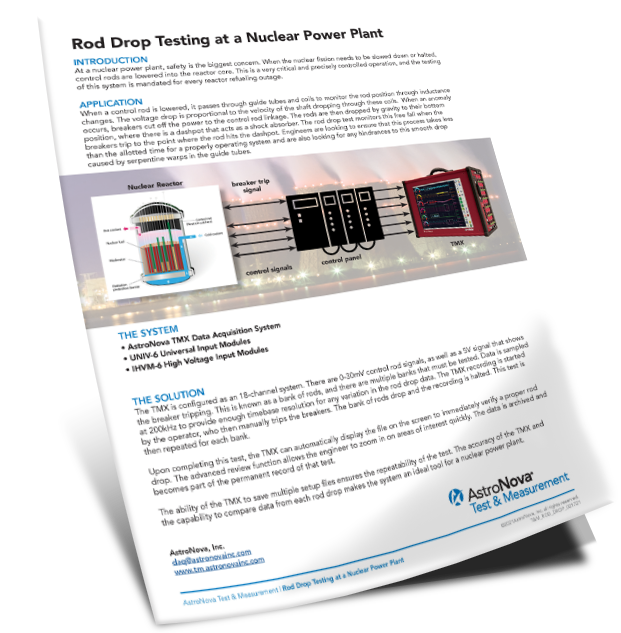
Safety is the highest priority in nuclear power plants, and one critical safety operation involves the precise control of reactor control rods. These rods are crucial for regulating nuclear fission by being lowered into the reactor core to slow down or stop the reaction. This operation must be flawless and rigorously tested during every reactor refueling outage.
Control rods are integral to managing the nuclear reaction within a reactor core. During both emergencies and routine operations, these rods are lowered through guide tubes, with their position monitored by changes in inductance as they pass through coils. The resulting voltage drop is proportional to the velocity of the rods, providing critical data on their performance. In the event of an anomaly, breakers automatically cut power to the control rod linkage, allowing the rods to drop by gravity to a secure position cushioned by a dashpot.
Rod drop testing is essential to verify that this free fall occurs within the required timeframe and without obstructions, such as warps in the guide tubes. The effectiveness of such testing requires advanced data acquisition systems.

Effective rod drop testing relies on several critical components:
- AstroNova TMX Data Acquisition System: The central system for capturing and processing data.
- UNIV-6 Universal Input Modules: Handle diverse input signals to accommodate various testing requirements.
- IHVM-6 High Voltage Input Modules: Provide precise measurements of high voltage inputs critical to testing.
The AstroNova TMX system is an 18-channel system capable of handling multiple signals, including 0-30mV control rod signals and a 5V signal indicating breaker trips. Testing multiple banks of rods requires data sampling at a high rate of 200kHz, ensuring sufficient timebase resolution to detect any variations in the rod drop process.
The testing begins when the operator manually trips the breakers, causing the rods to drop. This sequence is repeated for each bank of rods. Upon completion, the TMX system automatically displays the recorded data, allowing for immediate verification of a successful rod drop. Using advanced review functions, engineers can quickly zoom in on specific areas of interest. All data is archived, becoming part of the permanent test record.
The TMX system’s ability to save multiple setup files ensures consistency and repeatability in testing procedures. Its precision and capability to compare data from each rod drop make the TMX system indispensable for maintaining safety in nuclear power plants.
The AstroNova TMX Data Acquisition System, with its advanced monitoring capabilities and high accuracy, is crucial for ensuring the safety and reliability of rod drop testing in nuclear power plants. By providing detailed and precise data, this system is critical to maintaining optimal performance and adherence to essential protocols of safety.


